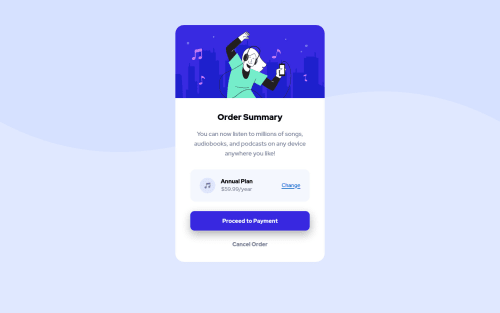Order summary component

Solution retrospective
This was one of my first frontend mentor challenge. If you have any suggestion, I will glad to hear it.
Please log in to post a comment
Log in with GitHubCommunity feedback
- @MelvinAguilar
Hi @tamerlantian 👋, good job completing this challenge, and welcome to the Frontend Mentor Community! 🎉
Here are some suggestions you might consider:
- You could use the CSS backgrounds properties to set the background:
body { . . . background-color: var(--main-bg-color); background-image: url(../images/pattern-background-desktop.svg); background-repeat: no-repeat; background-position: left top; }background-colorSet the background color.background-imageSet a background image.background-repeatSets if a background image will be repeated along the horizontal and vertical axes, or not repeated at all.background-positionSets the starting position of a background image.- You can also specify the size of the background image with background-size
The background property is shorthand for all the properties mentioned above:
background: var(--main-bg-color) url(../images/pattern-background-desktop.svg) no-repeat left top;References:
- The music icon is for decoration purposes only, so it could be hidden from screen readers by adding aria-hidden="true" and leaving its alt attribute empty:
<img src="./images/icon-music.svg" alt aria-hidden="true">I hope those tips will help you.
Good job, and happy coding!
Join our Discord community
Join thousands of Frontend Mentor community members taking the challenges, sharing resources, helping each other, and chatting about all things front-end!
Join our Discord